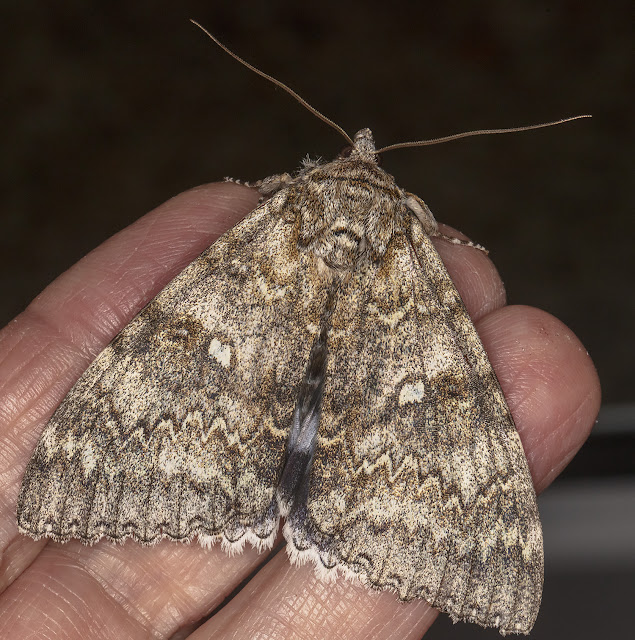 |
| Clifden Nonpareil, Catocala fraxini. Crowborough, 4 September 2018. |
This is a Clifden Nonpareil, sometimes called Blue Underwing. It was once resident in the UK, but died out, and was then seen only as an occasional immigrant. It is re-establishing itself, but still is only seen a few times a year away from the coast. So I was lucky that this specimen appeared on my garden fence above the light of my moth trap.
I saw it from my kitchen window before dawn and thought I might have a Red Underwing.
 |
| Red Underwing, Catocala nupta. West Wickham Common, 8 September 2016. |
That would have been good because although these are not scarce, they rarely come to light, and I have only seen two, both at West Wickham Common. But no! It was bigger and better than that.
 |
| Clifden Nonpareil, Catocala fraxini. Crowborough, 4 September 2018. |
And it is big, one of our biggest moths. The Old Lady is quite sizeable:
 |
| Old Lady, Mormo maura. Kelsey Park, 28 August 2015. |
.. But it's not
as big, and it lacks the flashy underwings. For size, you might consider Hawk-moths; they are pretty big, like this Privet Hawk-moth that some trappers brought to Sevenoaks.
 |
| Privet Hawkmoth, Sphinx ligustri. Sevenoaks Wildlife Reserve, 7 July 2013. |
I saw one at Hayes the next year. These were very impressive. Incidentally, blue is a rare colour among moths. I only know one other in Britain with some blue, and it's another Hawk-moth:
 |
| Eyed Hawk-moth, Smerinthus ocellata. Crowborough, 3 July 2017. |
All of these were a real pleasure to see and handle. But the Clifden nonpareil is the rarest.
 |
| Clifden Nonpareil, Catocala fraxini. Crowborough, 4 September 2018. |













